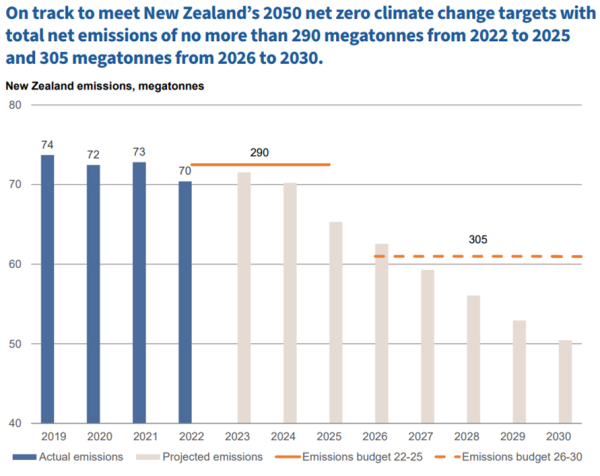The Economic Power of Gender Equality
Reasearch shows that diversity and equal roles for women delivers better results for people, for the planet and for profits.
The Climate Change Commission is seeking feedback on more ambitious emissions reduction targets.

Like the climate, the Climate Change Response Act 2002 requires the Climate Change Commission – He Pou a Rangi:
An eight-week consultation is underway on these matters with submissions due by 31 May 2024. There are three discussion documents. Companies and other organisations will be reviewing these consultation documents where they think there will be an impact on them.
Boards and directors will also want to ensure that any submission their organisation makes is well informed and consistent with their overall strategy and purpose.
Beyond the specifics of the potential direction of travel for targets and emissions budgets, there are a few pieces of context for directors and boards to be aware of, reflecting the Commission’s analysis.
Potential changes to New Zealand’s 2050 net zero target will likely mean New Zealand will continue to contribute to global warming after 2050. This means New Zealand will have positive emissions of between 19 and 28 MtCO2e on an ongoing basis from that date. Methane is not included in this target.
As the legislation requires, the Commission highlights four significant changes since the target was set:
The Commission points to net economic benefits of reductions in carbon emissions based on its modelling.
It suggests that a strengthened 2050 target would be supported by more rapid electrification of transport, faster phase out of fossil fuel use, methane reducing technologies being adopted in agriculture, more public transport use and reduced air travel, and greater use of electricity in steel making.
Aviation and maritime emissions are not currently part of the 2050 target. There is international action in these sectors through the International Civil Aviation Authority (ICAO) and the International Maritime Organisation (IMO). Both are aiming for net zero in their sectors by 2050 and staged reductions in emissions between now and then.
The European Union is also taking action to reduce emissions in these sectors, including bringing shipping into their emission trading scheme and setting targets for reductions in aviation emissions.
The Commission suggests that this international action will not be sufficient and domestic targets and action are needed. Alongside this are calls by Air New Zealand for a government mandate to help drive sustainable aviation fuel use.
According to information in the recently released Government targets (target 9), New Zealand is on track to meet the first three emissions budgets.

The Commission is seeking to adjust these emissions budgets based on new information and has outlined its thinking on a fourth emissions budget (2036–2040).
The proposed changes to the first three emissions budgets reduces the total emissions by around 19 MtCO2e.
The proposed fourth emissions budget would set total emissions for the period 2036–2040 at 134 MtCO2e, or a 63% reduction in emissions to below 2021 levels.
The Commission says that emissions budgets can be met by reducing emissions where they are created in the first place (e.g. using electric cars or trucks instead of petrol or diesel), removing carbon dioxide (e.g. tree planning) or using offshore mitigation/offsets – essentially buying/paying for another country's emissions reductions or removals.
Its modelling also suggests that there is a minor economic impact from this emissions budget. It also comments that the economic benefits from actions to meet the fourth emissions budget more than make up for any negative impacts of meeting it. For the first time they have been able to quantity the benefits of improved air quality from reduced emissions, which the Commission estimates are $2.7 billion per year.
At a minimum, directors and boards should be aware that the Climate Change Commission is providing ongoing advice about the levels of New Zealand greenhouse gas emissions to meet the 2050 target, and our progress towards targets. The Government will make decisions about these matters, informed by the Commission’s advice.
Directors and boards of emissions-intensive industries, including in the maritime and aviation sectors, should pay closer attention to the action proposed by the Commission, including the pathway to emissions reductions, and by considering ways to address any increase in emissions-related costs.